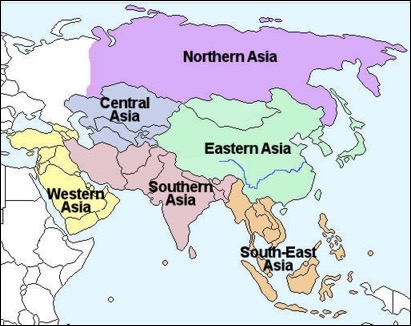Asia Profile
09 Nov 2021Asia Serve Beyond
The structure and a good portion of the content that follows is reworked from the Preface by Bong Rin Ro in Asian Christian Theology (2019). This post is also at efccm.asia.
Asia has a population of 4.6 billion or 60% of the world’s 7.9 billion people (Oct 2021). There is debate about whether to divide Asia into five or six regions and what to name the regions. For this profile I will consider Asia to have five regions, with the understanding that if Asian Russia (northern and eastern Russia, sometimes called Siberia or North Asia) were to be included the number would be six: East Asia (sometimes Northeast Asia), Southeast Asia, South Asia, Central Asia, and West Asia (or Middle East). The EFCCM is currently engaged in East Asia, Southeast Asia, and West Asia.

Asia is characterized by diversity of racial, cultural, historical, and religious backgrounds. Percentages of adherents vary according to sources consulted, with about 22% of Asians identifying as “unaffiliated,” but all contemporary religions are present in Asia and all were birthed in Asia: Hinduism (25%), Islam (24%), Buddhism (12%), Christianity (7%), Jainism, Sikhism, Shintoism, Judaism, Confucianism, and Taoism (World Atlas, 2018). Confucianism and Taoism are often not considered religions. Other than the Abrahamic religions (Judaism, Christianity, and Islam) Asian religions tend to be animistic.
Asia has a population of 4.6 billion or 60% of the world’s 7.9 billion people (Oct 2021). There is debate about whether to divide Asia into five or six regions and what to name the regions. For this profile I will consider Asia to have five regions, with the understanding that if Asian Russia (northern and eastern Russia, sometimes called Siberia or North Asia) were to be included the number would be six: East Asia (sometimes Northeast Asia), Southeast Asia, South Asia, Central Asia, and West Asia (or Middle East). The EFCCM is currently engaged in East Asia, Southeast Asia, and West Asia.

Asia is characterized by diversity of racial, cultural, historical, and religious backgrounds. Percentages of adherents vary according to sources consulted, with about 22% of Asians identifying as “unaffiliated,” but all contemporary religions are present in Asia and all were birthed in Asia: Hinduism (25%), Islam (24%), Buddhism (12%), Christianity (7%), Jainism, Sikhism, Shintoism, Judaism, Confucianism, and Taoism (World Atlas, 2018). Confucianism and Taoism are often not considered religions. Other than the Abrahamic religions (Judaism, Christianity, and Islam) Asian religions tend to be animistic.
*****
According to Bong Rin Ro, many Asian governments seem to be trying to bring unity to their countries by invigorating these traditional religions. In addition, because Western or Japanese colonial rule is a part of the history of all East Asian and Southeast Asian countries except Thailand and Japan, most of Asia seeks to preserve and revitalize their indigenous cultures through emphasizing traditional religions and customs.
As a minority faith in Asia claiming only 7% of the population, Christianity is usually considered a foreign religion introduced through Western colonialism. Christians have faced opposition from governments, religious fanatics, traditional intellectuals, and secularists. This includes physical persecution. Nevertheless, the church is growing rapidly in South Korea, China, the Philippines, Singapore, and some Islamic countries.
Globalization has brought rapid economic development and constantly changing political, social, intellectual, and religious realities to Asia that create new challenges for the church. These developments are particularly noticeable in the megacities of Asia where about 51% of Asians live (World Economic Forum). Of the world’s 49 megacities 33 are in Asia and 19 of those will be in China by 2025 (Global Data). The largest megacity is Tokyo with 37 million people (Newsweek, Oct. 3, 2021). Reaching the megacities of Asia with the gospel of Jesus Christ might be the church of Asia’s biggest (yet largely neglected?) challenge.
In addition, the church in Asia faces internal challenges of theological beliefs and practices that are not consistent with biblical teaching. Theological liberalism that started with 17th century Schleiermacher and was then followed by theological movements such as neo-orthodoxy, secular theology, and post-liberalism have been attractive in the Asian church. But these have undermined the authority of the Bible and the gospel of God revealed in it, turning the Christian faith into relativistic human ethical constructs and denying the uniqueness of the Lord Jesus Christ.
Perhaps Asian Christians find themselves facing both external and internal challenges not unlike that of the early church: a minority faith looked down upon by the majority of people outside the faith and undermined by disagreements from within.
May the Lord of the harvest send more laborers to Asia!…especially to the megacities.


Bong Rin Ro, “Foreword” in Asian Christian Theology: Evangelical Perspectives, general ed. Timoteo D. Gener, associate ed. Stephen T. Pardue (UK: Langham Global Library, 2019), p. xv-xvi.